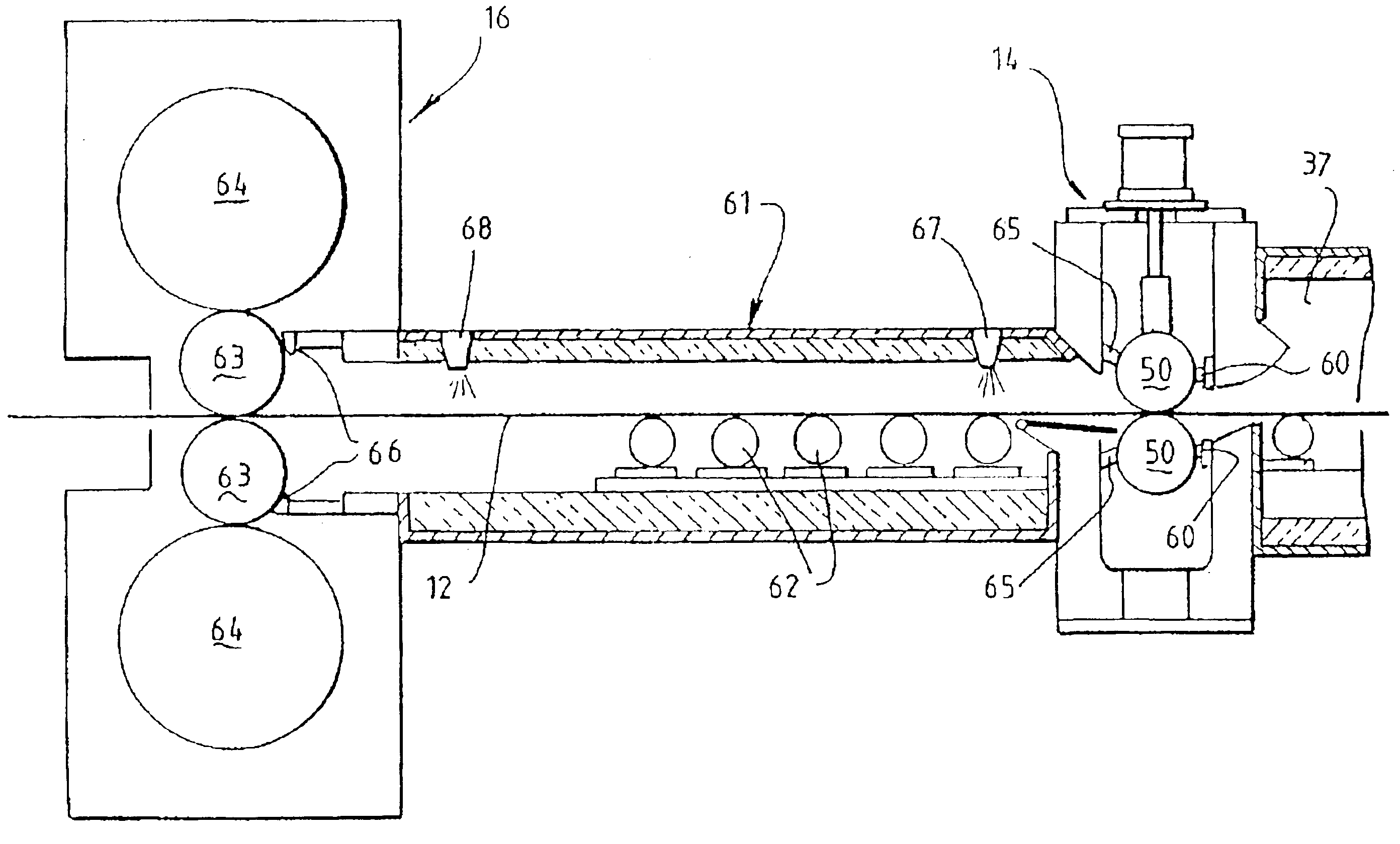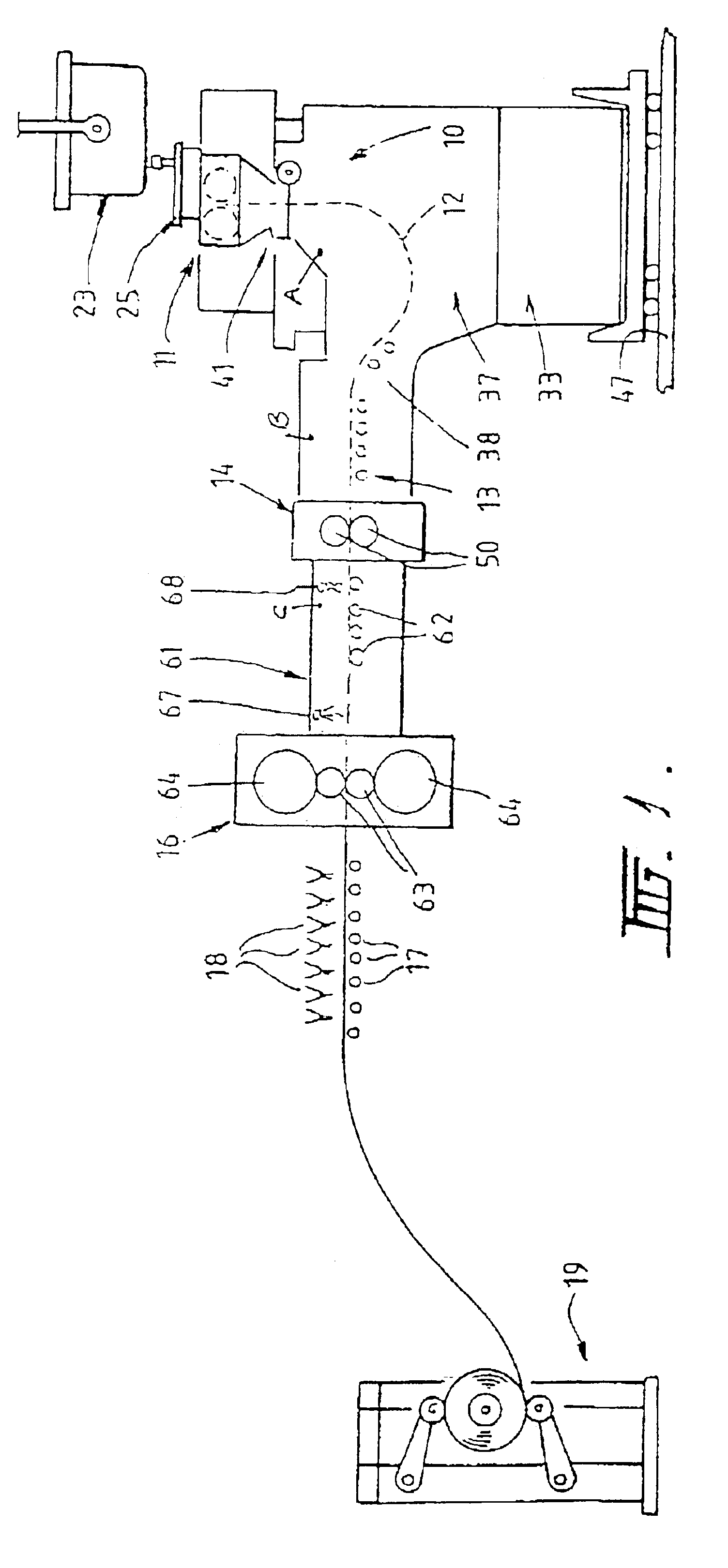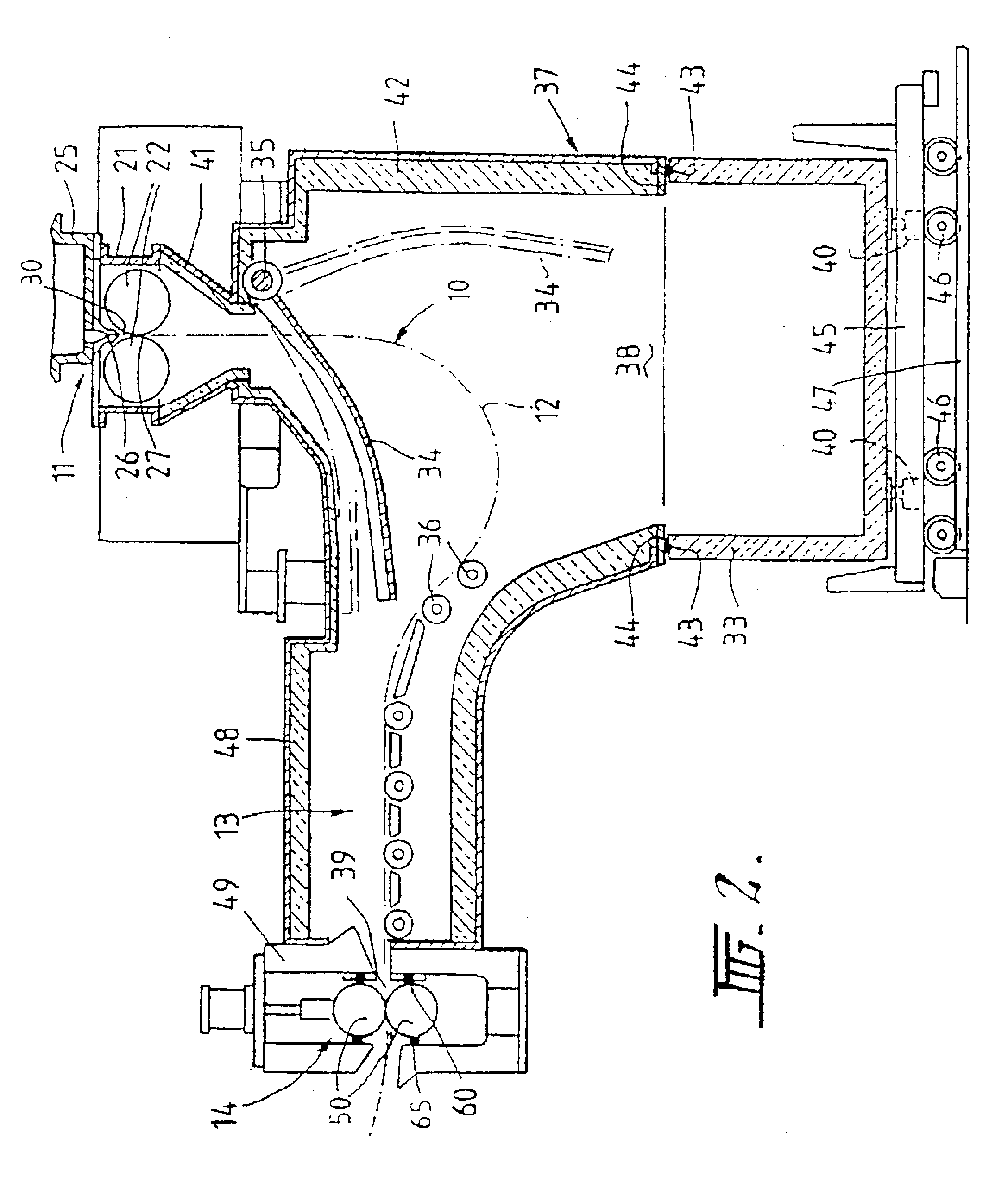Casting steel strip
- Summary
- Abstract
- Description
- Claims
- Application Information
AI Technical Summary
Benefits of technology
Problems solved by technology
Method used
Image
Examples
Embodiment Construction
[0043]The casting and rolling installation illustrated in FIGS. 1 to 7 comprises a twin roll caster denoted generally as 11 that produces a cast steel strip 12 which passes in a transit path 10 across a guide table 13 to a pinch roll stand 14. After exiting the pinch roll stand 14, the strip passes to a hot rolling mill 16 in which it is hot rolled to reduce its thickness. The rolled strip exits the rolling mill and passes to a run out table 17 on which it may be force cooled by a fine mist from water jets 18 and thence to a coiler 19.
[0044]Twin roll caster 11 comprises a main machine frame 21 which supports a pair of parallel casting rolls 22 having casting surfaces 22A. Molten metal is supplied during a casting operation from a ladle 23 through a refractory ladle outlet shroud 24 to a tundish 25 and thence through a metal delivery nozzle 26 above the nip 27 between the casting rolls 22. Molten metal thus delivered forms a casting pool 30 supported on the casting surface 22A of the...
PUM
| Property | Measurement | Unit |
|---|---|---|
| Temperature | aaaaa | aaaaa |
| Temperature | aaaaa | aaaaa |
| Fraction | aaaaa | aaaaa |
Abstract
Description
Claims
Application Information
 Login to View More
Login to View More - R&D
- Intellectual Property
- Life Sciences
- Materials
- Tech Scout
- Unparalleled Data Quality
- Higher Quality Content
- 60% Fewer Hallucinations
Browse by: Latest US Patents, China's latest patents, Technical Efficacy Thesaurus, Application Domain, Technology Topic, Popular Technical Reports.
© 2025 PatSnap. All rights reserved.Legal|Privacy policy|Modern Slavery Act Transparency Statement|Sitemap|About US| Contact US: help@patsnap.com



